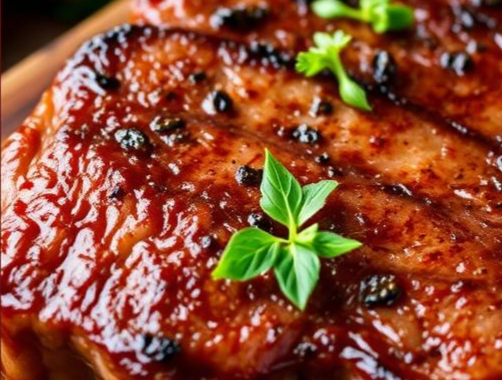Ensuring meat is cooked to the correct doneness is paramount for both culinary excellence and, more critically, food safety. Undercooked meat poses a significant risk of foodborne illness, while overcooked meat can result in a dry, tough, and unappetizing dish. For home cooks and culinary enthusiasts alike, understanding the reliable methods for determining meat doneness is a fundamental skill that elevates cooking from a chore to an art. This comprehensive guide will explore various techniques, from the unequivocally accurate to the more experiential, providing you with the knowledge to consistently achieve perfectly cooked, safe, and delicious meat every time.
The Importance of Proper Meat Doneness
Before delving into the “how-to,” it’s crucial to understand why achieving proper doneness is so vital.
- Food Safety: This is the primary concern. Harmful bacteria such as Salmonella, E. coli, and Listeria can be present in raw meat. Cooking meat to its recommended internal temperature effectively kills these pathogens, making the food safe for consumption.
- Optimal Flavor and Texture: Beyond safety, doneness directly impacts the sensory experience. Properly cooked meat retains its juices, resulting in a tender, succulent texture and rich flavor. Overcooking can dry out meat, making it stringy and bland, while undercooking can leave it chewy and unpalatable.
- Consistency: Mastering doneness allows for consistent results, ensuring that your culinary creations meet your expectations every time you cook.
The Gold Standard: The Meat Thermometer
Without a doubt, the most accurate and reliable method for determining meat doneness is using a meat thermometer. Visual cues and touch tests can be misleading; only an internal temperature reading can confirm the safety and desired doneness.
Types of Meat Thermometers:
- Instant-Read Thermometers: These are invaluable tools, providing a precise temperature reading within a few seconds. They are ideal for checking the doneness of various cuts of meat, roasts, and poultry. Simply insert the probe into the thickest part of the meat, avoiding bone or gristle.
- Probe Thermometers (Leave-In): Designed to stay in the meat throughout the cooking process, these often come with a wired probe that connects to an external display. They are excellent for larger cuts like roasts or whole poultry cooked in an oven or grill, allowing you to monitor the temperature without opening the oven door.
- Fork Thermometers: Less common, these combine a fork with a temperature probe. While convenient for turning meat, their accuracy can sometimes be compromised.
- Digital vs. Analog: Digital thermometers typically offer faster and more precise readings than older analog models.
How to Use a Meat Thermometer Correctly:
- Placement is Key: Insert the thermometer into the thickest part of the meat, away from bones, fat, or gristle. Bones conduct heat differently, and fat pockets can give a false low reading.
- Wait for Stability: For instant-read thermometers, wait for the reading to stabilize (usually a few seconds) before taking it as final.
- Check Multiple Spots: For larger cuts, take readings in several locations to ensure even cooking.
- Clean After Each Use: Sanitize the probe thoroughly after each use to prevent cross-contamination.
USDA Recommended Internal Cooking Temperatures
The U.S. Department of Agriculture (USDA) provides science-based guidelines for minimum safe internal temperatures. Always allow for a resting period after cooking, as the internal temperature will continue to rise a few degrees (carryover cooking), and juices will redistribute, resulting in a more tender and flavorful product.
| Type of Meat | Minimum Internal Temperature | Doneness Notes |
|---|---|---|
| Ground Meat (Beef, Pork, Lamb, Veal) | 160°F (71°C) | Always cook ground meat thoroughly. |
| Ground Poultry (Chicken, Turkey) | 165°F (74°C) | Always cook ground poultry thoroughly. |
| Poultry (Whole, Parts, Stuffing) | 165°F (74°C) | Chicken, turkey, duck, goose. Check thickest part of the thigh, wing, or breast. Stuffing also needs to reach 165°F. |
| Fresh Beef, Pork, Veal, Lamb Roasts, Steaks, Chops | 145°F (63°C) (then rest 3 minutes) | |
| * Beef/Lamb: Rare | 125-130°F (52-54°C) | Very red center, cool |
| * Beef/Lamb: Medium-Rare | 130-135°F (54-57°C) | Red center, warm |
| * Beef/Lamb: Medium | 135-140°F (57-60°C) | Pink center, hot |
| * Beef/Lamb: Medium-Well | 140-150°F (60-66°C) | Slightly pink center |
| * Beef/Lamb: Well-Done | 150°F+ (66°C+) | No pink, firm |
| Fresh Pork (Chops, Roasts) | 145°F (63°C) (then rest 3 minutes) | Medium-rare pork is now considered safe and can be juicy with a slight pink hue. |
| Fish | 145°F (63°C) | Cook until flesh is opaque and flakes easily with a fork. |
| Leftovers and Casseroles | 165°F (74°C) | Reheat until steaming hot throughout. |
Remember the Resting Rule: For whole cuts of beef, pork, veal, and lamb, after reaching 145°F (63°C), remove from heat and allow to rest for at least 3 minutes. This allows the internal temperature to stabilize and juices to redistribute, leading to a juicier result.
Secondary Methods: Visual Cues and Touch Tests (Use with Caution)
While the meat thermometer is indispensable, experienced cooks often use visual cues and touch tests as supplementary indicators, especially for certain types of meat like steaks. These methods are less reliable and should not be used as the sole determinant of doneness, particularly for poultry or ground meats where complete cooking is critical for safety.
Visual Cues:
- Color:
- Beef/Lamb: The interior color ranges from bright red (rare) to pink (medium) to gray/brown (well-done). The exterior should have a good sear or crust.
- Pork: Historically cooked until white, modern guidelines allow for a slight pink tint at 145°F (63°C), indicating a juicier, more flavorful product.
- Poultry: The most critical. Chicken and turkey should be opaque white throughout, with no pinkness whatsoever, especially near the bone.
- Fish: Cook until the flesh turns opaque and flakes easily with a fork.
- Juice Clarity:
- Poultry: Juices should run clear, not pink or cloudy, when pierced with a fork. Reddish juices are a strong indicator of undercooked poultry.
- Beef/Lamb/Pork: Juices will range from reddish for rare to mostly clear for well-done.
- Shrinkage/Firmness: As meat cooks, it contracts and becomes firmer. Overcooked meat will shrink significantly and feel very hard.
The Touch Test (Mostly for Steaks):
This method relies on comparing the firmness of cooked meat to different parts of your hand. It’s an experiential test, requiring practice and familiarity. This test is generally only reliable for whole cuts of steak and less so for poultry or pork.
- Rare: Gently press the pad of your thumb to the pad of your index finger. The fleshy part at the base of your thumb will feel soft and springy – this is how rare steak feels to the touch.
- Medium-Rare: Press your thumb to your middle finger. The base of your thumb will feel slightly firmer than rare.
- Medium: Press your thumb to your ring finger. The base of your thumb will feel noticeably firmer.
- Well-Done: Press your thumb to your pinky finger. The base of your thumb will feel very firm and unyielding – similar to a well-done steak.
Limitations: The touch test can be subjective and varies based on the cut, thickness, and even the individual’s hand. It should always be used in conjunction with, or as a secondary check to, a meat thermometer.
Time-Based Cooking (Estimates Only)
Recipe cooking times are merely guidelines. Many factors influence how quickly meat cooks:
- Starting Temperature: Meat cooked straight from the refrigerator will take longer than meat brought to room temperature.
- Thickness and Size: Thicker or larger cuts take significantly longer.
- Bone-In vs. Boneless: Bone-in cuts often cook slower due to the bone’s insulating properties, but the bone can also transfer heat, making it complex.
- Oven/Grill Temperature: Variations in appliance calibration can affect cooking times.
- Pan Type/Material: Cast iron retains heat better than thinner pans, affecting searing and cooking.
Relying solely on time without checking internal temperature is a common mistake that leads to either undercooked or overcooked meat.
Common Mistakes to Avoid
- Guessing Doneness: This is the most significant risk to food safety and culinary quality. Always use a thermometer.
- Cutting Into Meat to Check Doneness: While tempting, piercing the meat allows precious juices to escape, leading to a drier product. This also introduces more bacteria into the center of the meat if the knife isn’t sterile. Use a thermometer.
- Not Resting the Meat: Skipping the resting period after cooking results in tougher, less juicy meat. The resting period allows muscle fibers to relax and reabsorb moisture.
- Relying on External Appearance Alone: A dark, crispy exterior doesn’t guarantee a cooked interior, especially for thicker cuts.
- Not Calibrating Your Thermometer: Periodically check your thermometer’s accuracy using an ice bath (should read 32°F / 0°C) or boiling water (should read 212°F / 100°C at sea level).
Specific Meat Considerations
- Poultry: Always prioritize safety. Chicken, turkey, and other poultry must reach 165°F (74°C). There is no “rare” or “medium-rare” for poultry.
- Ground Meats: Due to the processing, pathogens can be distributed throughout ground meat. Therefore, all ground meats (beef, pork, lamb, poultry) must be cooked to 160°F (71°C) or 165°F (74°C) for poultry.
- Fish: Fish is delicate. Overcooking quickly turns it dry and flaky. It’s done when it reaches 145°F (63°C) and flakes easily with a fork.
- Pork: Modern pork is leaner and safer to eat at a lower temperature than in previous generations. 145°F (63°C) with a 3-minute rest provides a juicy, slightly pink result.
- Whole Roasts (Beef, Lamb): These allow for a range of doneness from rare to well-done. The carryover cooking effect is most pronounced here, so remove them from the heat a few degrees before they reach your target temperature.
Conclusion
Achieving perfect meat doneness is a cornerstone of great cooking and essential for ensuring food safety. While visual and touch methods can offer supplementary clues, the meat thermometer remains the single most reliable and accurate tool in your culinary arsenal. By investing in a quality thermometer and familiarizing yourself with USDA recommended temperatures and proper usage techniques, you can confidently cook any cut of meat to perfection. Embrace the thermometer, understand the nuances of resting, and you will consistently produce dishes that are safely cooked, deliciously tender, and brimming with flavor, transforming every meal into a culinary success.

